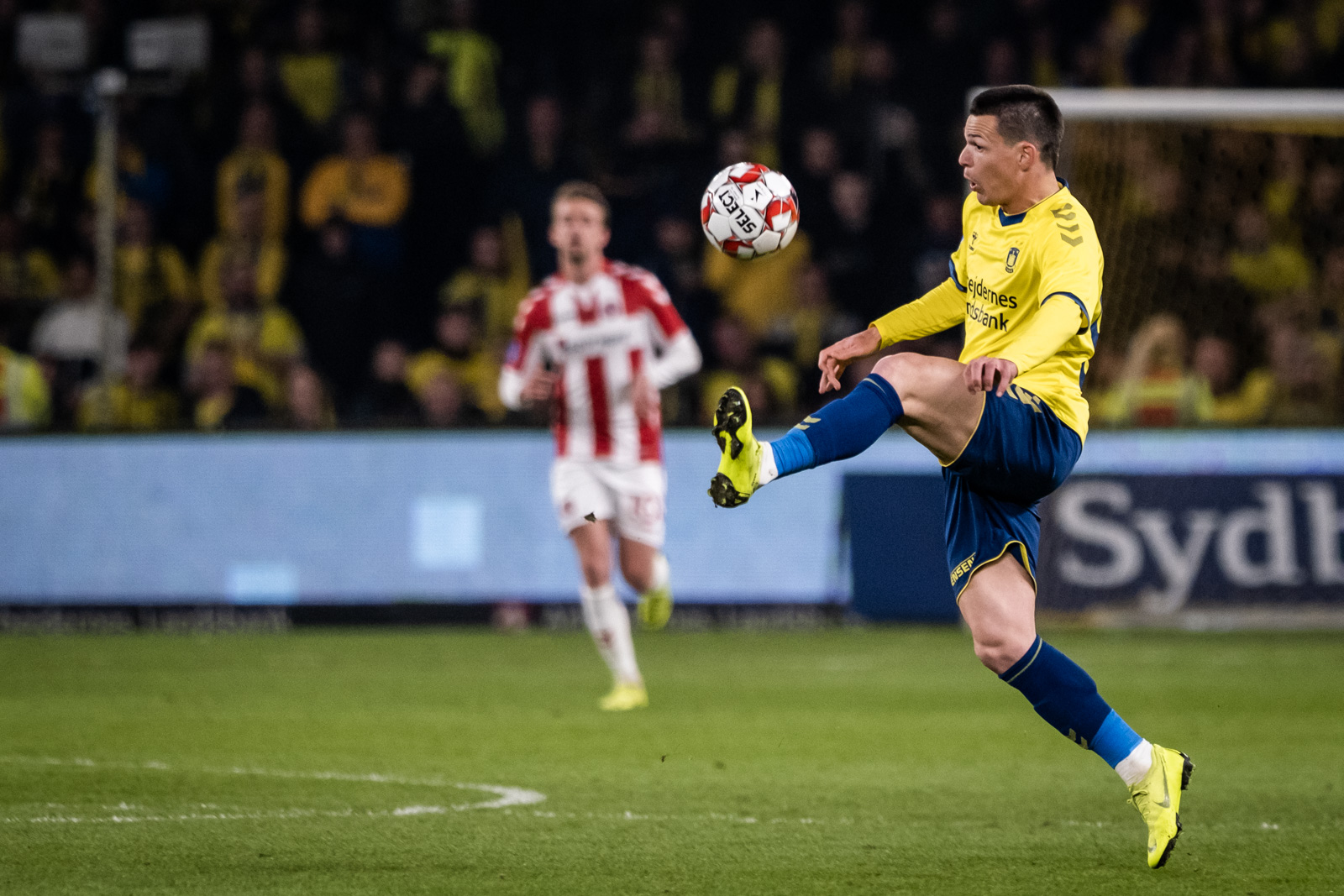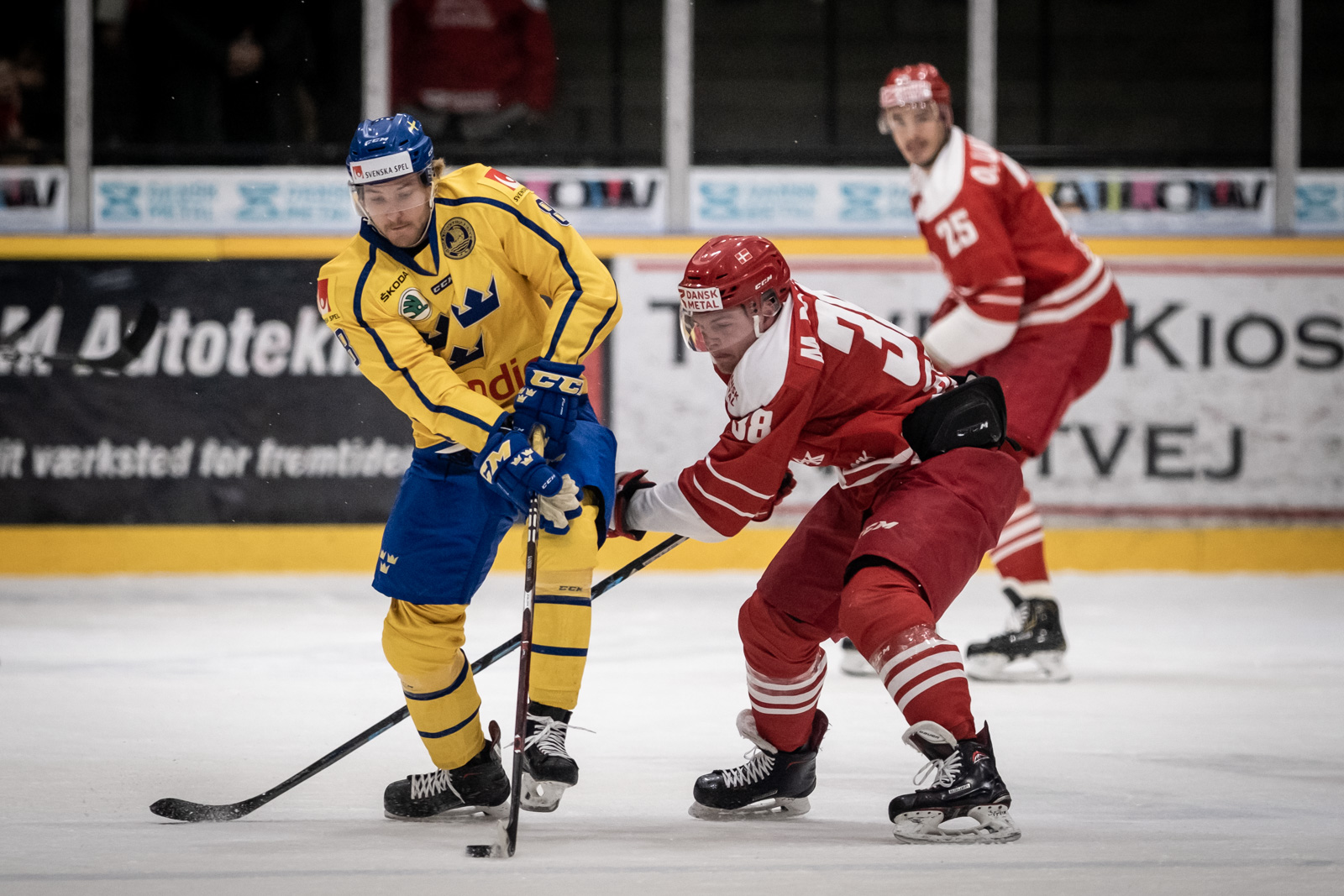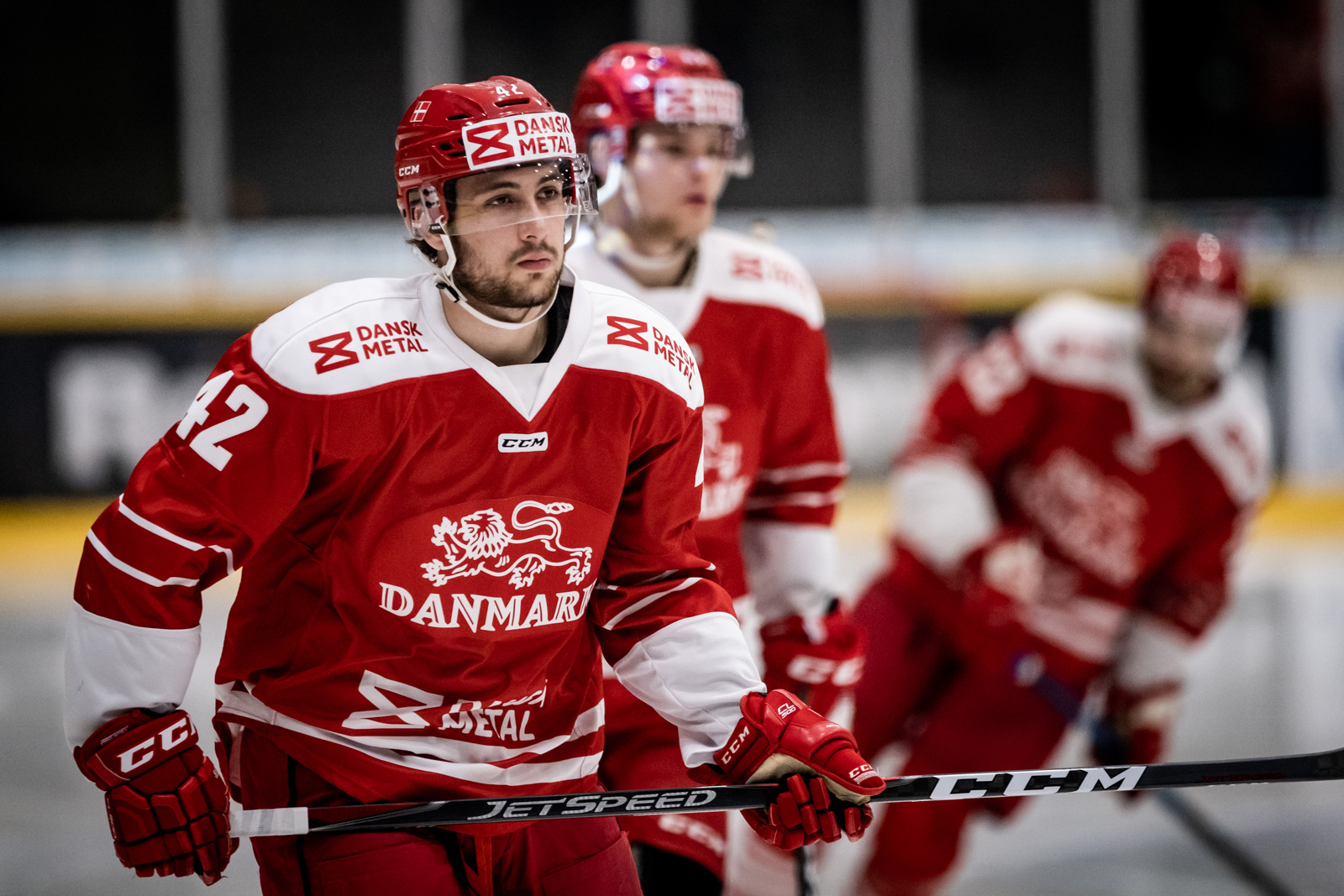Shooting sports with the Fujifilm 200mm
By photographer Kim Matthäi Leland, www.leland.dk
In this blog post, I’ll tell about my experiences using Fujifilm’s new 200mm telephoto lens for action sports, and I’ll compare it to other Fujifilm telephoto lenses, more specifically the 50-140 and the 100-400.
I am a professional freelance photographer based in Copenhagen, Denmark. I shoot for the photo agency Gonzales Photo – mainly concerts and music festivals, and also sports, mostly football (soccer).

Shot with the Fujinon XF200mmF2 R LM OIS WR with the 1.4 teleconverter at 1/1250 s, ISO 2000 and f/2.8.
Football (soccer) – finally we have an equivalent of 400mm f/2.8
For football, I usually use the Fujifilm X-T2 with the 100-400 lens, and it works pretty well, all though it isn’t very fast (aperture-wise) with its 4.5-5.6 aperture. So I was pretty excited when Fujifilm Denmark asked me if I wanted to try out the new 200mm f/2 telephoto lens.
The Fujinon XF200mmF2 R LM OIS WR is Fuji’s biggest lens so far. But it actually isn’t that big compared to similar DSLR lenses. The lens weighs about 2.4 kg with the 1.4 teleconverter – that’s about 1 kg more than the 100-400 that I’ll be comparing it to throughout this blog post.
The Fujinon XF200mmF2 R LM OIS WR with the 1.4 teleconverter on the X-T3.
The teleconverter is included when you buy the 200mm lens, and so is a nice padded nylon bag. Note that this teleconverter only works with the 200mm lens – you can’t use the teleconverter with other lenses, and you can’t use the “old” Fujifilm teleconverters with the 200mm lens.

The 200mm is quite big – the 50-140 looks a bit like a dwarf in comparison. In this image, the 200mm is on a Fujifilm X-T3, and without the included 1.4 extender. Also shown are the Samyang 8mm fish eye and the 18-55.

Everything on the photo above – except for the 200mm lens’ hood – fits in a fairly small back pack, the Think Tank Urban Approach 15. That’s including batteries, straps etc. – pretty amazing! I often bike to photo gigs, so it’s extremely practical for me to be able to travel relatively light.
With the teleconverter, the focal length is about 280mm and the maximum aperture is 2.8. When you take the 1.5 crop factor into account, the focal length is comparable to the 400mm lenses that many sports photographers use. So – a really nice focal length for football, and at f/2.8. What’s not to like?
I brought the 200mm and the teleconverter for the Danish cup semi final between Brøndby IF and AaB.

It is certainly possible to hand-hold the 200mm lens for shorter periods of time. But for a whole football match of 90 minutes, I would always use a monopod.
What struck me first was that I was able to shoot with a much lower ISO than I’m used to. Depending on the light at the stadium, I usually shoot evening matches at ISO 6400 with my 100-400 – sometimes I even need to go higher than that. But the f/2.8 aperture of the 200mm with the teleconverter let me shoot at ISO values between 1600 and 2000, and I was also able to set the shutter speed at 1/1250 s., where I often have to go to 1/1000 or even 1/800 when using the 100-400. The lower ISO gives more clean images with less noise, and the higher shutter speed gives sharper images. Those are of course great advantages.

Shot with the Fujinon XF200mmF2 R LM OIS WR with the 1.4 teleconverter at 1/1250 s, ISO 1250 and f/2.8.
The 200mm is fun to shoot with. The AF performance is great, and so is the sharpness. I’m not a pixel peeper, and this is not a scientific test – but I would say that both sharpness and AF is very comparable to both the 50-140 and 100-400. Note that the 200mm I borrowed was a pre production model, but I think it performs pretty much as the production models.
For comparison – here is an image from a previous match, shot with the 100-400:

From the UEFA Europe League match between FCK and Atlético Madrid. Shot with the Fujinon XF100-400mmF4.5-5.6 R LM OIS WR lens at 1/1000 s, ISO 3200 and f/5.6. Focal length 143mm.
The comparison perhaps isn’t quite fair, since it was a different stadium under different conditions. You might be able to detect a bit more image noise (the really white big dots aren’t image noise, but snow, hehe…), but many people would say that the difference isn’t huge.
I shoot football in continuous focus (AF-C), AF Mode Zone and Set 2 in AF-C Custom Settings (ignore obstacles).
With the 200mm lens, I was able to get images from the far end of the field – meaning about 100m away. These would have to be cropped quite a bit to fill the frame, but it is possible to get shots in about 3000 x 2000 pixels (after cropping) of the goal keeper from the opposite end of the field. From the middle of the field and about half way towards me, I could fill the frame without too much cropping. And once the players came closer than about 20-30m, I would switch to the other camera body with the 50-140. So it involved a lot of switching between cameras, where I usually shoot the whole game with one camera and one lens (the 100-400).
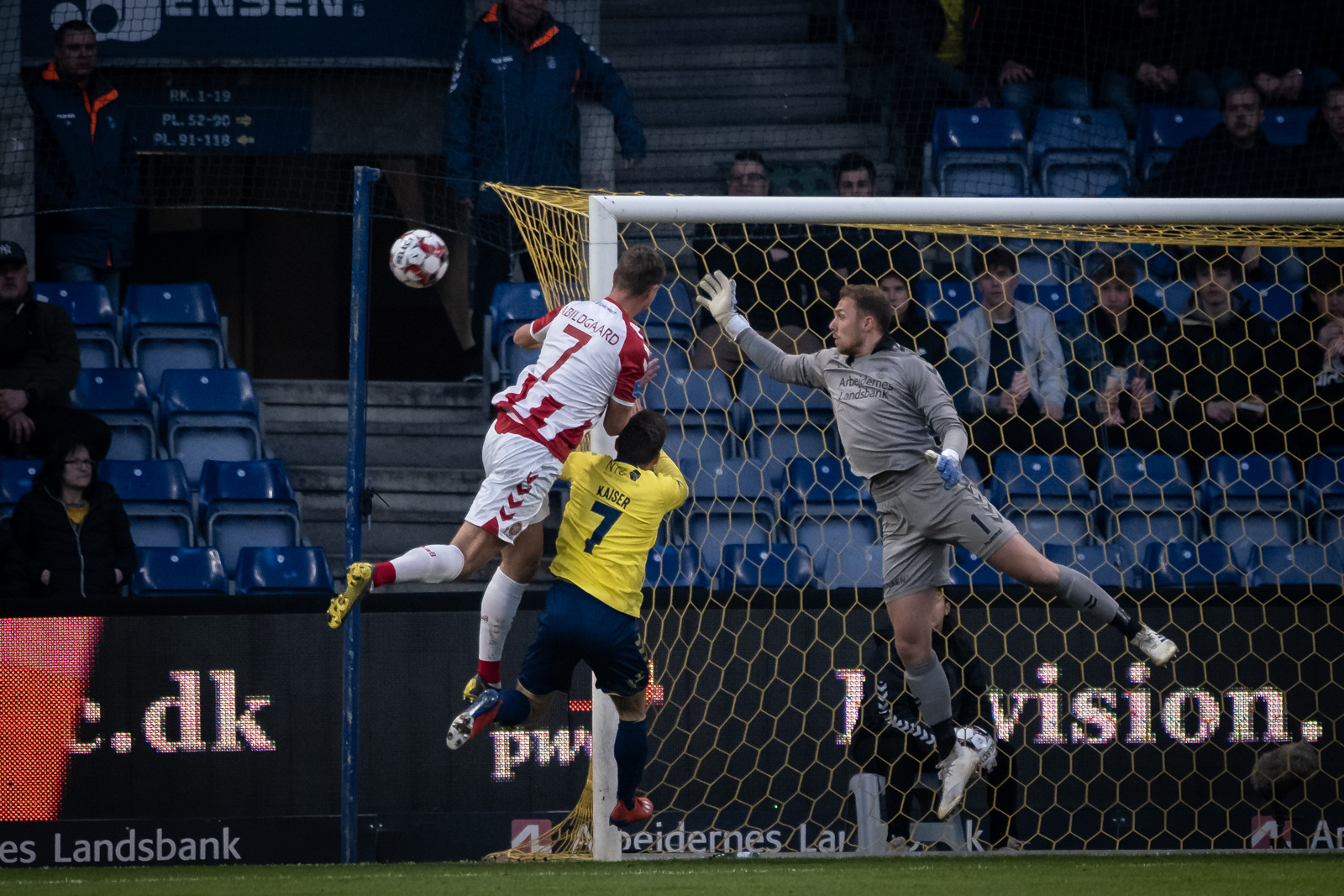
Shot with the Fujinon XF200mmF2 R LM OIS WR with the 1.4 teleconverter at 1/1250 s, ISO 1250 and f/2.8. I was sitting behind the opposite goal, meaning this was about 100m away. The image was cropped, the resulting image was about 3000 x 2000 pixels.
It’s more fun when the action is closer. I love getting shots of players in the air, players fighting over the ball – and of course images where the ball is in the shot.
Another advantage of shooting with a wider aperture is that the images have a shallower depth of field – meaning that the background is more blurry than when I shoot with the 4.5-5.6 aperture of the 100-400. But honestly – I think that blurry backgrounds and bokeh is mostly something that we photographers think about. When I show people these images, they don’t notice anything different, compared to my usual images.

Shot with the Fujinon XF200mmF2 R LM OIS WR with the 1.4 teleconverter at 1/1250 s, ISO 1600 and f/2.8.
So what are the disadvantages of the 200mm lens? Well, it’s both heavier and bigger than the 100-400. And it obviously doesn’t zoom, which makes it less versatile than a zoom lens. This means that if you shoot a football game with the 200mm, you will also need e.g. a 50-140 or else you won’t be able to catch the action, once the players come close to you. And then you also need one more camera body, because it would be very impractical to change lenses every time the players move around the field. So while I’m able to shoot a whole match with the 100-400, I will need two lenses (and two cameras) if I want to use the 200mm.

Shot with the Fujinon XF200mmF2 R LM OIS WR with the 1.4 teleconverter at 1/1250 s, ISO 2000 and f/2.8. This image has not been cropped. It’s an example of an image where I could have switched to the 50-140 to get more in the shot.
And lastly, the 200mm lens is expensive. Here in Denmark, it’t about 3 times the price of a 100-400 at this time (april 2019).
Ice hockey – a fast lens for a fast sport
The 200mm lens also came along when I shot the national ice hockey match between Denmark and Sweden. Since an ice hockey rink is shorter than a football / soccer field (about 60m as opposed to about 100m), I figured that I would use the 200mm “au naturel”, meaning without the 1.4 extender.
I chose to stand behind one of the goals, a little bit out to the side. That meant that I had to shoot through the plexi glass, but I was also protected from pucks going astray.

I found a place where the glass wasn’t too scratched. But at long focal lengths, you don’t really see the scratches anyway.
200mm turned out to be a quite suitable focal length for ice hockey. But while the 200mm is great for ice hockey, you can’t rely on it as your only lens. Once the action gets closer to you, you need shorter focal lengths. About half of my “keepers” from this game ended up being taken with the 200mm. The rest of the keepers were shot with the 50-140, the 18-55 and the Samyang / Rokinon 8mm fish eye (the lenses shown on the gear photos above).

Shot with the Fujinon XF200mmF2 R LM OIS WR (no teleconverter) at 1/1250 s, ISO 1600 and f/2.
There was less light in the ice hockey arena than at the football match, maybe about a stop or so. So without the teleconverter, I could shoot at f/2, keep the shutter speed at 1/1250 and the ISO at around 1600.

Shot with the Fujinon XF200mmF2 R LM OIS WR (no teleconverter) at 1/1250 s, ISO 1600 and f/2.
Towards the end of the match, I ventured up on the back bleachers of the spectator area, hoping that the puck would not find its way all the way op there. That gave me a different perspective – and 200mm was also a good focal length for this.
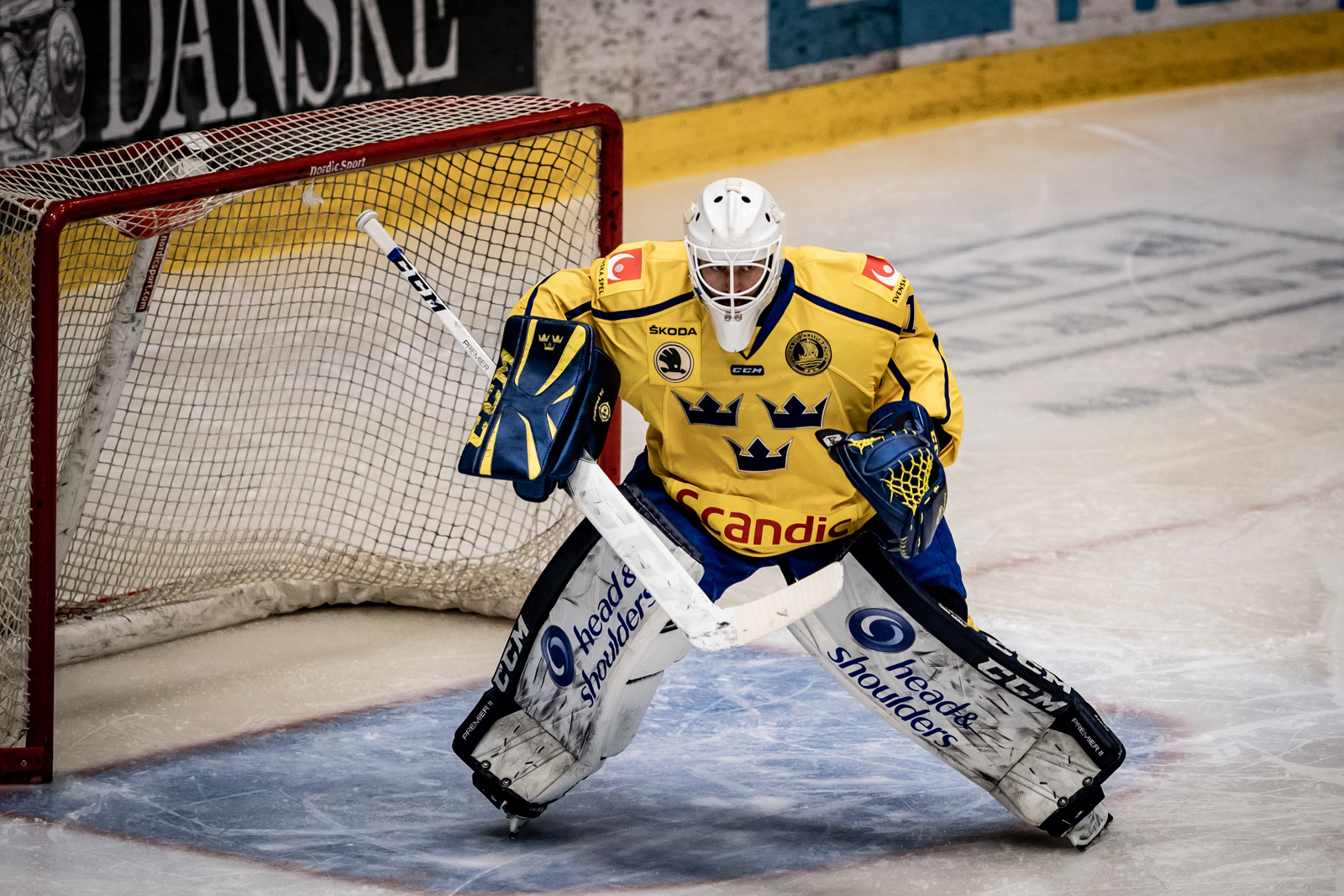
Shot with the Fujinon XF200mmF2 R LM OIS WR (no teleconverter) at 1/1250 s, ISO 1600 and f/2.
On these images taken from a higher angle, it’s easier to see the puck. And you always want the puck in the image, if possible.

Shot with the Fujinon XF200mmF2 R LM OIS WR (no teleconverter) at 1/1250 s, ISO 1600 and f/2.
Conclusion
Would I like to have the 200mm? Are you kidding – of course! It’s a beautiful lens capable of delivering beautiful images. Will I get it? Probably not, at least not right now. Sports photography only accounts for a small part of my income as a photographer, so it wouldn’t make sense for me to spend that kind of money on a lens, when I have both the 50-140 and the 100-400 that do the job quite well. With the two “old” teleconverters, the 50-140 and 100-400 are an incredibly versatile kit. And with the current prices in Denmark, you could get the 50-140, the 100-400 and both of the “old” teleconverters for the price of a 200mm lens – and still have about 10000 DKK (1300 EUR) to spare. Just know that with an aperture of 5.6 you may find yourself in situations where you can be forced to bump up the ISO more than you like. There are always compromises, and nothing comes for free.
So who is the 200mm lens for? If you need the wide aperture (f/2 without the teleconverter, f/2.8 with the teleconverter), and if the price is not a problem – then this could be the lens for you. But if you’re the thrifty type and don’t absolutely need the wide aperture, then have a look at the 50-140 and 100-400 (perhaps in combination with the “old” 1.4X and 2X teleconverters) before you make your decision. The ISO performance of the cameras only get better for every generation, and this may – at least partly – make up for the need for very wide apertures.
More images
And here is a bunch more images from the two games – all of them shot with the Fujinon XF200mmF2 R LM OIS WR:









